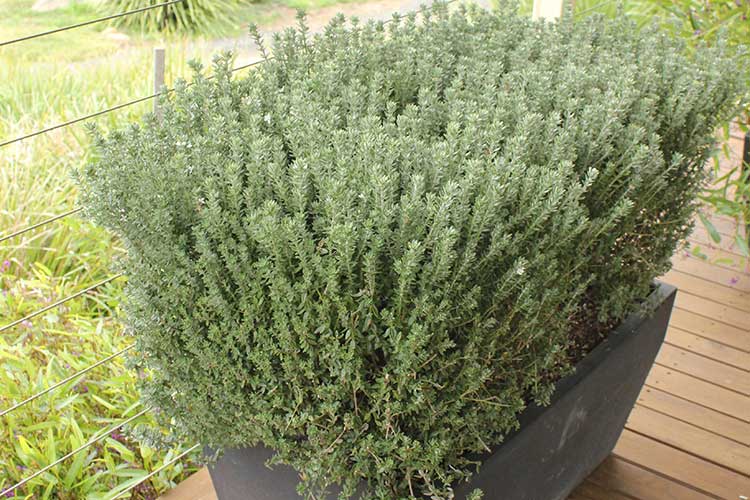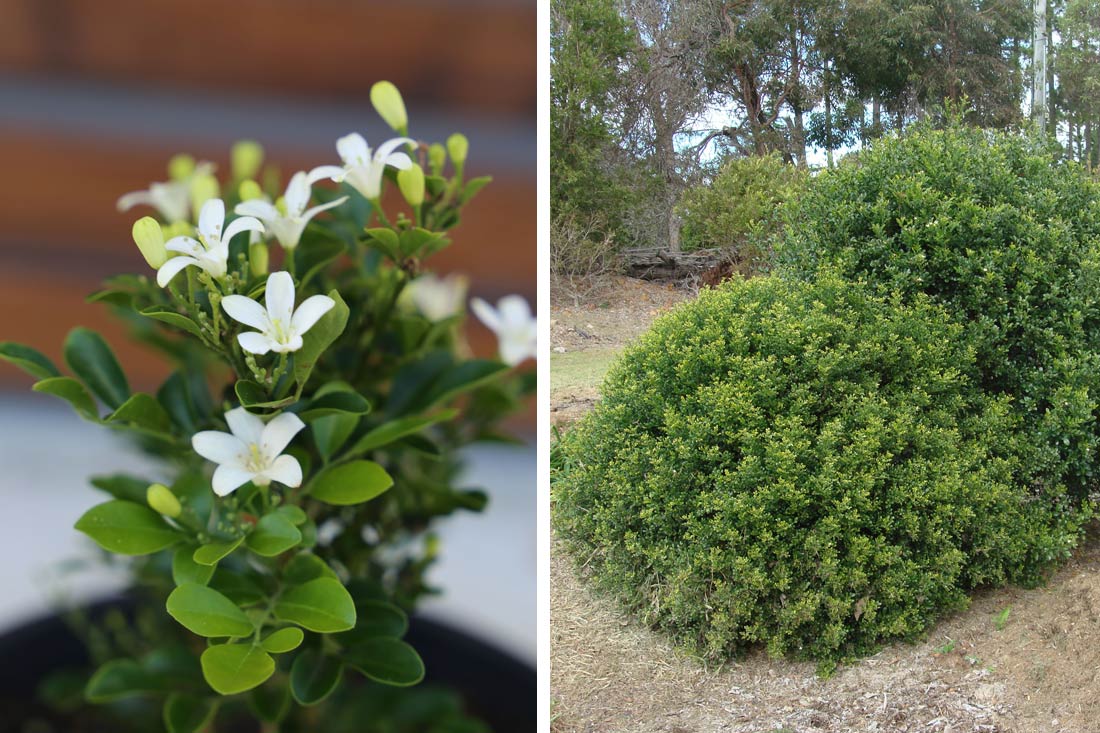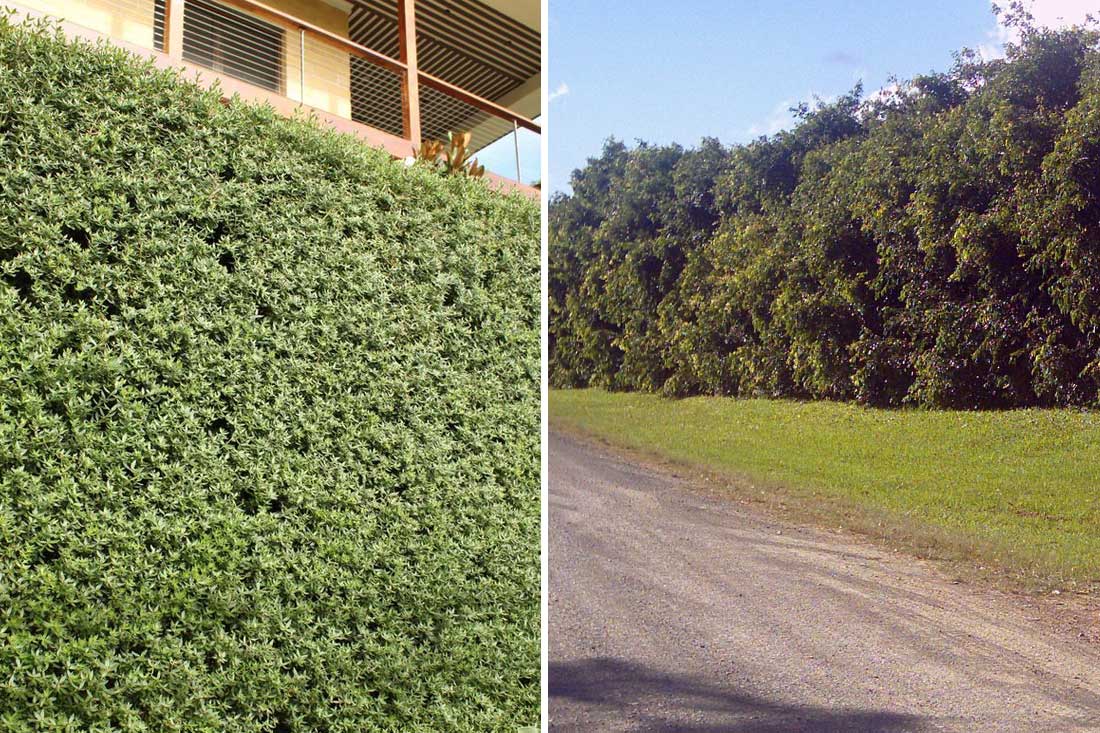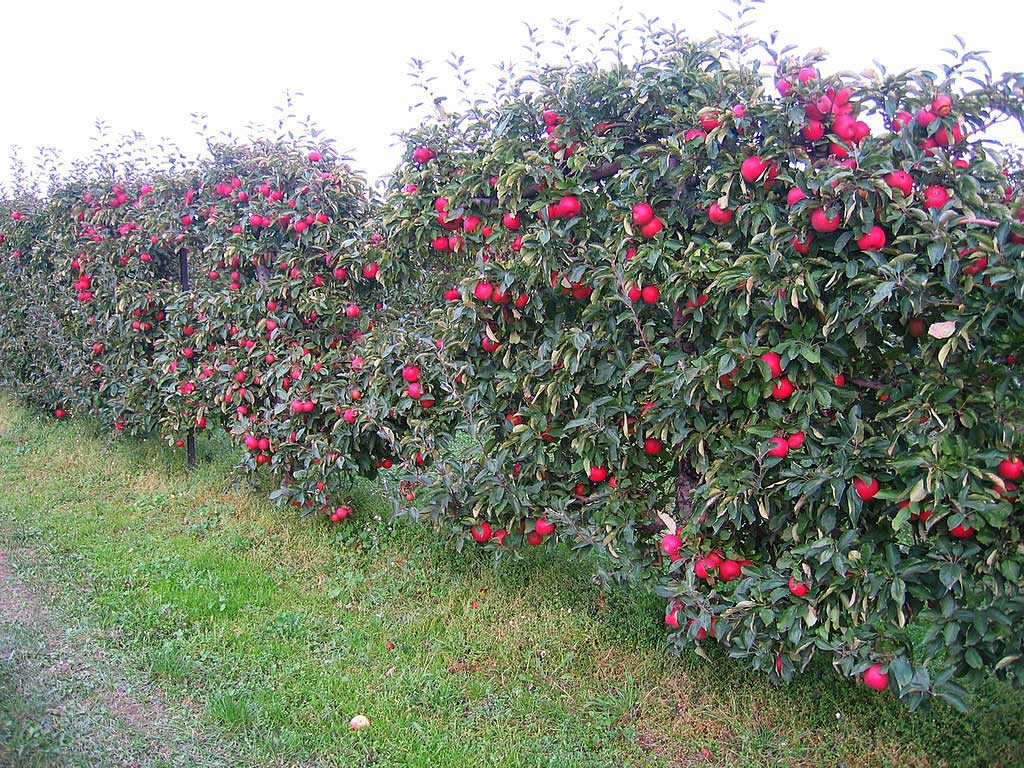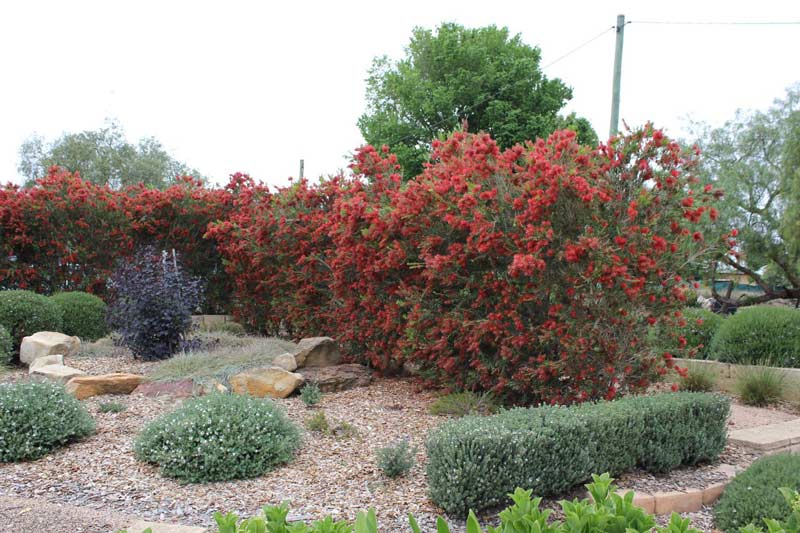Buxus species (both the English and the Japanese box) prefer cool climates with consistent moisture. For those of us who do not have suitable conditions for Buxus, a similar look can still be readily achieved as there are other plants which make wonderful substitutes.
Westringias offer exceptional choices for compact low hedges, topiary or even clipped balls in formal gardens. As a native alternative to Buxus, they are a perfect choice, having naturally small leaves and dense growth habit. Ozbreed Aussie Box® Westringia ‘WES02’ PBR can be kept as a dense compact shrub to 40 – 60cm high, and has dark green foliage and white flowers. The grey foliage of other Westringias, such as Grey Box™ Westringia ‘WES04’ PBR can be a delightful garden feature in itself. Grey Box™ is naturally low growing and compact, so minimal clipping will be needed to keep this plant in neat low formal hedges or even clipped balls.
The Min-a-min murraya is readily available and, like the full sized plant it was bred from, is very hardy and well suited to most regions of Australia. Its dark green nature and small leaves make it perfect for creating neat small hedges, balls or topiary, with a look very similar to box.
Another dark green leaved plant which is suitable for small neat hedges is Hobbit™ Syzygium francisii ‘DBK01’ PBR. Hobbit™ is a small growing lily pilly which has been bred especially for low growing hedges. Left to its own devices it will eventually reach 3m but as it is reasonably slow growing is ideal for keeping shorter and neatly pruned. Its slow growing nature means that it does not need to be pruned too often in order to maintain a neat and compact shape. Being a lily pilly it is hardy across most regions in Australia.
Many Callistemons have been bred to make good hedge plants. Scarlet Flame™ Callistemon viminalis ‘CC19’ PBR is one of the smallest varieties which if pruned 3 or 4 times per year will form very dense green hedges which are hardy through most regions of Australia (not recommend for QLD or NT). This plant flowers readily with masses of bright red bottle brush flowers which become a wonderful seasonal feature in the garden in their own right and add a lot of interest as a hedge plant.
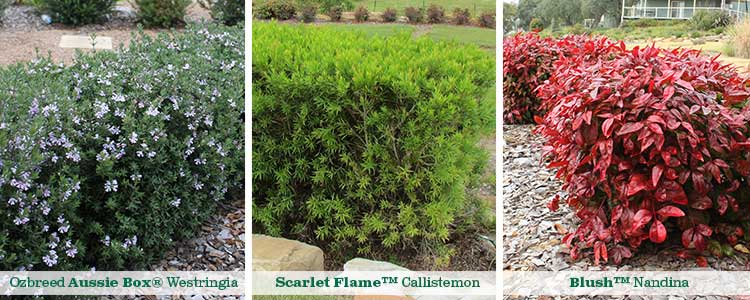
Another native which also makes a wonderful and compact low hedge suitable as a box substitute is Coastal Pink™ Correa alba ‘COR10’ PBR. Although this plant will get to 2m tall it can be very easily maintained at a much lower height. It is hardy in southern regions of Australia. The leaves of this plant are dark green with a grey tinge, a feature which particularly suits gardens in dry or coastal climates or native style gardens.
The range of Westringias, Callistemons and lily pillies which have been bred especially for hedging means that there are excellent choices of native plants suited for almost any style of hedges – from small borders for formal parterre gardens to clipped balls and dense screening. These give very good alternatives to both box and privet hedges and are well suited to Australian conditions. They can be clipped tightly and feature deep green foliage which is traditionally associated with box hedges but can also offer other features such as coloured new growth, grey foliage and flowers, all of which add further interest to a garden.
When adding additional interest to a garden which features hedges, clipped shapes are often considered, but unless you are handy with pruning can be hard to maintain. Instead consider flowers or coloured foliage for breaking up the monotony of green clipped hedges.
The Encore Azalea range offers some wonderful plants with a range of very vibrant flower colours which can be clipped to form balls or box shaped hedges, and yet provide a seasonal burst of colour to the garden. Cosmic Pink™ Rhaphiolepis indica ‘RAPH02’ PBR is another flowering plant which is a good alternative to box hedges. Its natural habit is dense and compact with small dark green leaves and masses of pink flowers. It is a very drought tolerant plant and hardy in most regions, making it a useful plant for creating formal or neat gardens in most conditions.
For coloured foliage Blush™ Nandina domestica ‘AKA’ PBR gives deep autumnal colours on new growth in autumn and spring. It is low growing (to 70cm) so perfect for short hedges. Year round foliage colour can be achieved with another nandina, Obsession™ Nandina domestica ‘SEIKA’ PBR which holds its red colour year round, or Neon Pink™ Iresine herbstii ‘HERBIE53’ PBR for very vibrant red/ pink foliage which does very well in part shade, or Brazilian Red Hots™ Alternanthera dentata ‘BRAZILIAN RED’ PBR which also features dazzling hot red pink foliage and makes a dramatic low hedge in gardens which are otherwise lacking in colour.
Many other plants will also make wonderful box hedge substitutes and may suit your local climate better. The key is to find plants with small leaves and naturally compact shapes so that they trim neatly and become dense bushes at the desired height. The plants mentioned here have all been bred especially for the purpose of training into neat hedges and are well worth using in any Australian garden.
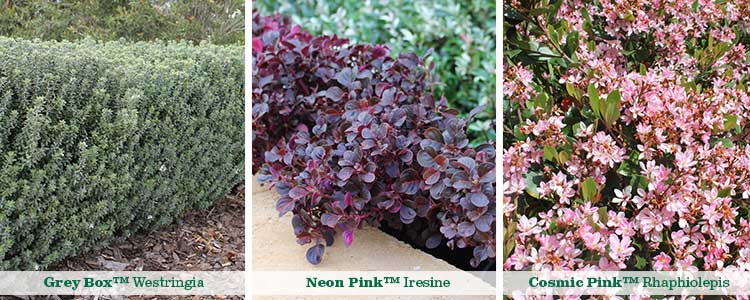
*Article published by Kate Wall

